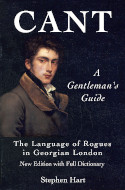THE BLUE-STOCKING CLUB
The earliest mention of a Blue-Stocking, or Bas-Bleu, occurs in the Greek comedy, entitled the Banquet of Plutarch. The term, as applied to a lady of high literary taste, has been traced by Mills, in his History of Chivalry, to the Society de la Calza, formed at Venice, in 1400, "when, consistently with the singular custom of the Italians, of marking academies and other intellectual associations by some external sign of folly, the members, when they met in literary discussion, were distinguished by the colour of their stockings. The colours were sometimes fantastically blended; and at other times one colour, particularly blue, prevailed." The Society de la Calza lasted till 1590, when the foppery of Italian literature took some other symbol. The rejected title then crossed the Alps, and found a congenial soil in Parisian society, and particularly branded female pedantry. It then diverted from France to England, and for awhile marked the vanity of the small advances in literature in female coteries.
But the Blue-stocking of the last century is of home-growth; for Boswell, in his Life of Johnson, date 1781, records: "About this time it was much the fashion for several ladies to have evening assemblies, where the fair sex might participate in conversation with literary and ingenious men, animated by a desire to please. One of the most eminent members of these societies, when they first commenced, was Mr. Stillingfleet (grandson of the Bishop), whose dress was remarkably grave; and in particular it was observed that he wore blue stockings. Such was the excellence of his conversation, that his absence was felt so great a loss that it used to be said, 'We can do nothing without the blue stockings;'" and thus by degrees the title was established. Miss Hannah More has admirably described a Blue-Stocking Club, in her Bas-Bleu, a poem in which many of the persons who were most conspicuous there are mentioned. And Horace Walpole speaks of this production as "a charming poetic familiarity called 'the Blue-Stocking Club.'"
The Club met at the house of Mrs. Montagu, at the north-west angle of Portman-square. Forbes, in his Life of Beattie, gives another account: "This Society consisted originally of Mrs. Montagu, Mrs. Vesey, Miss Boscawen, and Mrs. Carter, Lord Lyttelton, Mr. Pulteney, Horace Walpole, and Mr. Stillingfleet. To the latter gentleman, a man of great piety and worth, and author of some works in natural history, etc., this constellation of talents owed that whimsical appellation of 'Bas-Bleu.' Mr. Stillingfleet being somewhat of an humourist in his habits and manners, and a little negligent in his dress, literally wore gray stockings; from which circumstance Admiral Boscawen used, by way of pleasantry, to call them 'The Blue-Stocking Society,' as if to intimate that when these brilliant friends met, it was not for the purpose of forming a dressed assembly. A foreigner of distinction hearing the expression, translated it literally 'Bas-Bleu,' by which these meetings came to be afterwards distinguished." Dr. Johnson sometimes joined this circle. The last of the Club was the lively Miss Monckton, afterwards Countess of Cork, "who used to have the finest bit of blue at the house of her mother Lady Galway." Lady Cork died at upwards of ninety years of age, at her house in New Burlington-street, in 1840.
John Timbs
Club Life of London Vol. I
London, 1866

